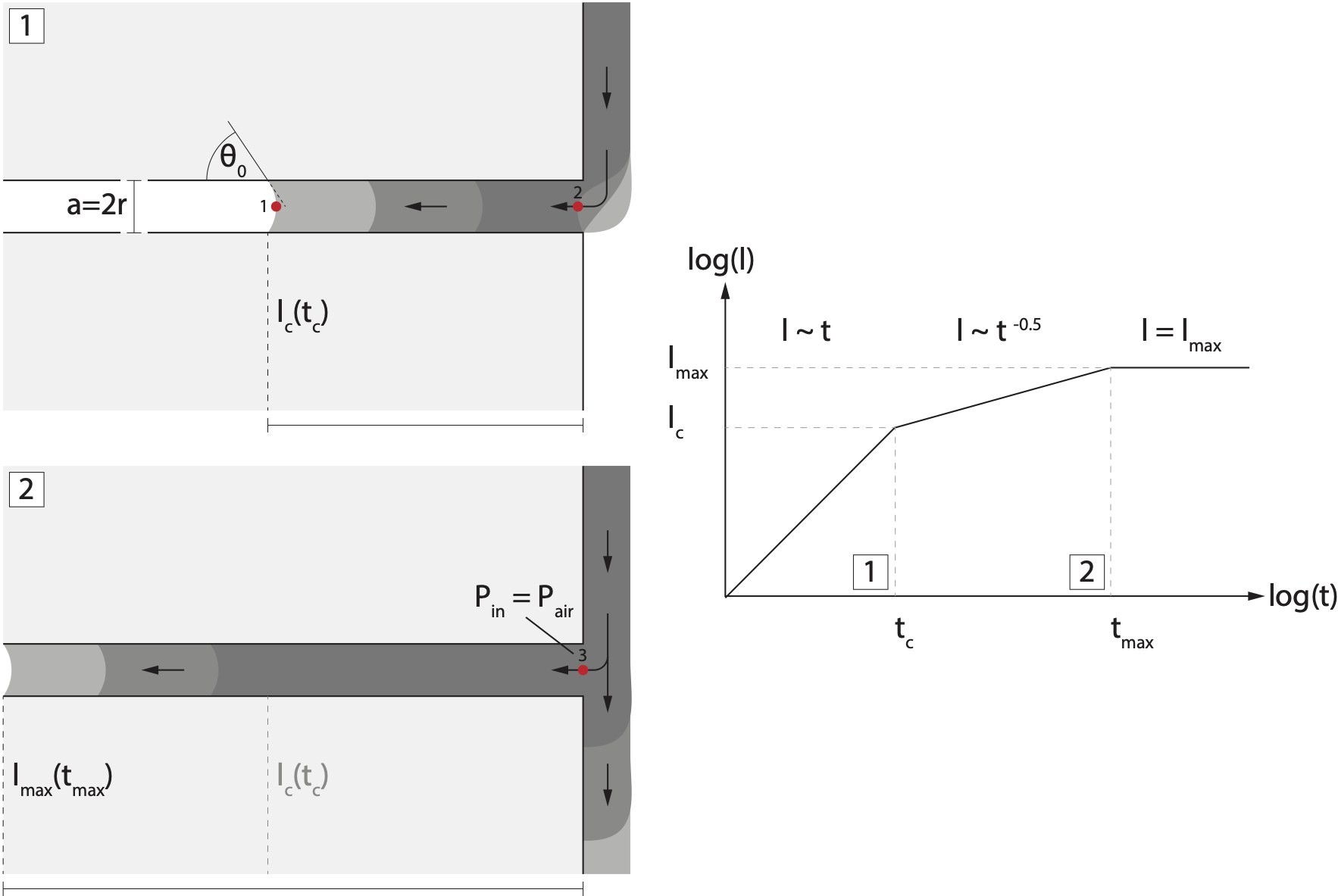We submitted a new preprint on a detailed process analysis of infiltration through fractured systems. The manuscript is currently under revision at Water Resources Research and can be found online at ESSOAr here doi.org/10.1002/essoar.10504345.1.
Infiltration and recharge dynamics in porous-fractured systems remain one of the most critical topics in the realm of vadose/critical zone modeling given the current dynamics of climate change. Prediction of recharge in these systems is often extremely difficult due to the erratic movement of water via partially gravity-driven flow. Classical volume-effective modeling approaches often cannot capture the complex dynamics that arise at fracture intersections and drive potential lateral dispersion of flows. Further, preferential pathways are important components for the assessment of vulnerability in many semi-arid and arid hydro(geo)logical systems as the proper estimation of their contribution to recharge processes can heavily influence the first arrival times of contaminants or agrochemicals.
In this work we model the infiltration process using our HPC SPH code and derive an analytical solution for the partitioning process. Based on considerations of the pressure balance we model the infiltration as a linear process of vertical movement as film flows followed by linear and Washburn-type imbibition into a horizontal fracture. Our approach allows us to obtain an analytical transfer function that can be employed with classical linear response theory to model flow through arbitrary long numbers of fracture intersections. Based on the transfer function we are also able to analytically compute dimensionless dispersion coefficients and transition times as an important way to link internal geometrical structure and discharge behavior, one of the classical end-member (inversion) problems in many hydrogeological systems.
This work is intended as a first step towards a better understanding of such processes. The complexity of porous-fractured systems clearly poses a problem for upscaling and may be integrated in future works by employing distributions of the transfer function parameter space to capture dynamics through more complex fracture types.

Conceptual model for infiltration dynamics at a single fracture intersection (under revision at WRR 2020)